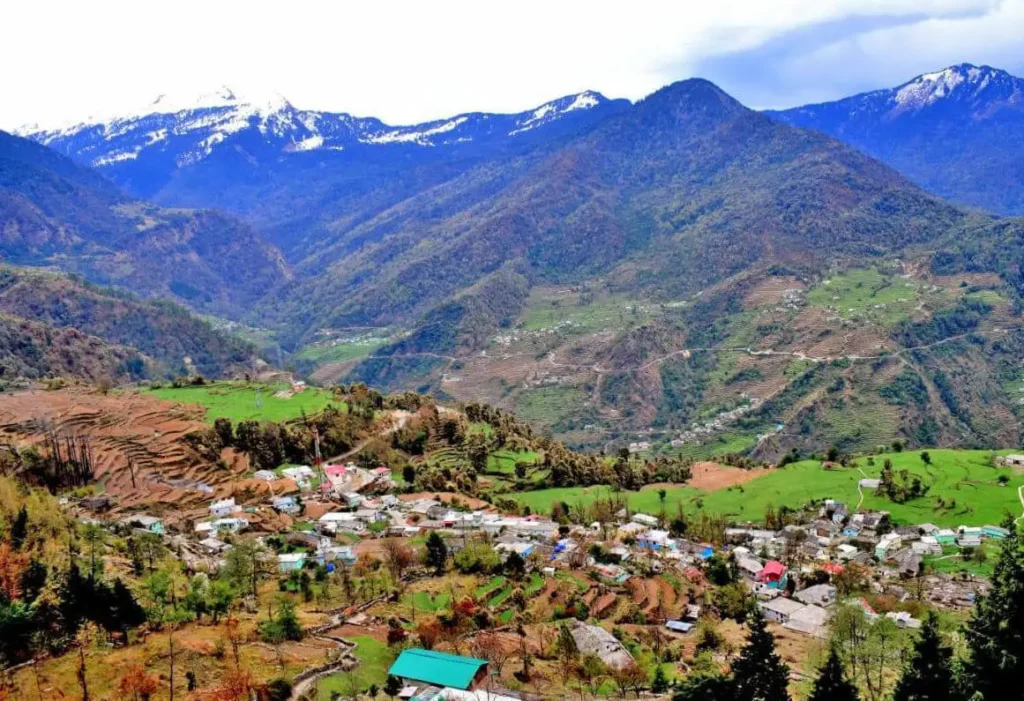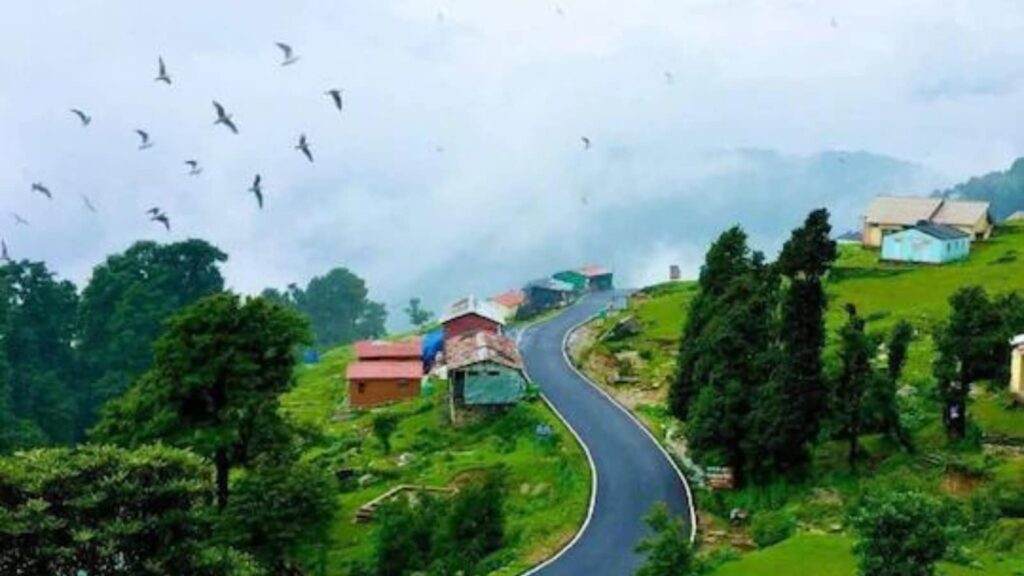Chopta tour package from Delhi offers the perfect opportunity to explore the hidden gem of Uttarakhand. This well-organized package takes you through lush meadows, dense forests, and spectacular views of the snow-capped peaks. Highlights include a visit to the Tungnath Temple, the highest Shiva temple in the world, and a trek to the Chandrashila Summit, where trekkers can witness panoramic views of iconic peaks like Nanda Devi and Trishul. With everything from transportation, accommodation, and meals provided, you can focus solely on the adventure without any worries.
The Chopta tour package from Delhi is designed to offer trekkers a memorable experience, regardless of their skill level. From the serene beauty of Deoria Tal Lake to trekking through the Kedarnath Wildlife Sanctuary, each day of the tour is filled with stunning natural beauty. The package also includes a visit to the peaceful Ukhimath Village, where you can immerse yourself in the local culture and spirituality. With expert guides and a carefully planned itinerary, this tour ensures you make the most of your trip to one of the most scenic destinations in the Indian Himalayas.

Discover Chopta: Trekking, Nature, and Spirituality Combined
Chopta, often referred to as the “Mini Switzerland of India,” is a serene paradise for nature lovers, trekkers, and adventure enthusiasts. Nestled in the beautiful Garhwal Himalayas in Uttarakhand, Chopta offers a wide range of activities for travelers. Here are some of the top things to do in Chopta:
1. Trek to Tungnath Temple
One of the most popular activities in Chopta is the trek to the Tungnath Temple, the highest Lord Shiva temple in the world, situated at an altitude of 12,073 feet. The trek to this ancient temple offers stunning views of the surrounding mountains, and it’s a spiritual experience that combines adventure with devotion.
2. Summit Chandrashila Peak
A challenging yet rewarding trek, Chandrashila (meaning “Moon Peak”) stands at 13,000 feet. The summit offers breathtaking 360-degree views of some of the highest peaks in the Himalayas, including Nanda Devi, Trishul, and Chaukhamba. It’s a must-do for trekkers seeking panoramic views and a sense of accomplishment.
3. Visit Deoria Tal Lake
Located about 3-4 km from Chopta, Deoria Tal Lake is a serene, beautiful spot surrounded by lush forests. The lake is known for its crystal-clear waters, which reflect the towering snow-capped peaks of the Himalayas. It’s a great spot for camping, nature walks, and birdwatching.
4. Explore the Meadows of Chopta
The meadows of Chopta are vast, lush, and vibrant, especially during the spring and summer months. Perfect for a leisurely stroll, picnic, or simply soaking in the natural beauty, these meadows are dotted with wildflowers, providing a peaceful and tranquil environment for visitors to relax and unwind.
5. Wildlife Watching at Kedarnath Wildlife Sanctuary
Chopta is located within the boundaries of the Kedarnath Wildlife Sanctuary, which is home to diverse wildlife. Nature lovers can spot various species of birds, animals like the Himalayan Monal, Barking Deer, and perhaps even the elusive Snow Leopard. A trek through the sanctuary offers an opportunity to experience the region’s rich biodiversity.
6. Camping Under the Stars
For those seeking an authentic experience, camping in Chopta is a fantastic way to connect with nature. Whether near Deoria Tal or on the way to Tungnath, camping offers a chance to enjoy the tranquility of the region, stargazing, and the peaceful ambiance of the Himalayan foothills.
7. Visit Ukhimath Village
On your way to Chopta, stop by Ukhimath, a quaint hill village known for its historical and spiritual significance. It is the winter seat of Lord Kedarnath, and the Ukhimath Temple is a must-visit. The village offers a glimpse into the simple lifestyle of the locals and provides an enriching cultural experience.
8. Birdwatching and Photography
Chopta, with its rich biodiversity and scenic landscapes, is a photographer’s dream. The area is perfect for birdwatching, especially with species like the Himalayan Griffon, Kailash Pheasant, and Golden Eagle. The combination of forests, meadows, and snow-capped peaks makes Chopta a wonderful destination for nature photographers.
9. Skiing in Winter
During the winter months, Chopta transforms into a snow-covered wonderland, offering opportunities for skiing and snow activities. The meadows become a perfect playground for snow lovers, making it an ideal destination for winter sports enthusiasts.
10. Explore Nearby Villages
Chopta is surrounded by charming villages like Kund and Baniyakund. Exploring these picturesque villages provides a chance to experience local culture, interact with friendly villagers, and learn about the traditional lifestyle in the Garhwal region.
Whether you’re an adventurer, nature enthusiast, or spiritual seeker, Chopta offers a variety of activities that make it a must-visit destination in the Indian Himalayas.

The Best Time to Visit Chopta
Chopta, nestled in the picturesque Garhwal Himalayas of Uttarakhand, is a year-round destination. However, the ideal time to visit depends on the type of experience you’re looking for, whether it’s trekking, sightseeing, or enjoying the weather. Here’s a breakdown of the best times to visit Chopta:
1. Summer (March to June)
Summer is the most popular time to visit Chopta. The weather is pleasant and ideal for trekking, with daytime temperatures ranging from 15°C to 20°C and cooler nights around 5°C to 10°C. The meadows of Chopta are lush and green, and the Tungnath Temple and Chandrashila trek offer clear skies and stunning views of the snow-capped peaks. This period is perfect for those looking to explore the region’s beauty without the extreme cold of winter or the monsoon rains.
2. Monsoon (July to September)
The monsoon season brings heavy rainfall to Chopta, making trekking and outdoor activities challenging. Trails may become slippery, and landslides are common in the region. It is best to avoid visiting during this time unless you enjoy the monsoon ambiance and are prepared for wet conditions. However, the lush greenery of the region during this period is beautiful, and you can still explore the area if you’re an experienced traveler.
3. Autumn (September to November)
Autumn is another excellent time to visit Chopta. The monsoon rains recede, leaving behind lush landscapes and clear skies. Temperatures are comfortable, ranging from 10°C to 15°C during the day and -5°C to 5°C at night. This is also a great time to visit for trekking, as the weather is cool, and the surrounding views of the Himalayas are breathtaking. The clear skies and minimal rainfall make it an ideal season for outdoor activities.
4. Winter (December to February)
Winter transforms Chopta into a snowy wonderland, attracting snow lovers and adventure enthusiasts. Temperatures can drop well below freezing, ranging from -5°C to 5°C during the day, with colder nights. This period is perfect for winter sports like skiing and snow trekking. The Chandrashila trek becomes more challenging due to the snow, but it offers a magical experience for those who enjoy winter trekking. However, be prepared for cold weather, and make sure you pack sufficient winter gear.
For the best trekking experience, the ideal times to visit Chopta are during the summer (March to June) and autumn (September to November). Winter (December to February) is perfect for those looking for a snow-filled adventure, while the monsoon season (July to September) should be avoided due to heavy rainfall and slippery trails.

What to Pack for Chopta: A Complete Packing List
When heading to Chopta for a trek, it’s important to pack the right gear to ensure a safe and comfortable journey. Whether you’re trekking to Tungnath Temple, summiting Chandrashila Peak, or simply exploring the serene meadows, the weather can be unpredictable, so packing appropriately is key. Here’s a comprehensive packing list for your Chopta trip:
1. Clothing
- Trekking Pants & Jackets: Lightweight, moisture-wicking pants and jackets are essential for comfort. For winter, bring a warm jacket or down jacket.
- Thermal Wear: Especially for winter months (November to February), pack thermal innerwear for warmth.
- Layered Clothing: Layering is crucial in the mountains. Carry a mix of lightweight t-shirts, fleeces, and sweaters that you can add or remove based on temperature changes.
- Waterproof Jacket: If visiting during the monsoon or winter, a waterproof jacket or poncho will protect you from rain or snow.
- Trekking Shoes: Comfortable, durable trekking shoes with good grip are essential, especially since you’ll be walking on rocky and uneven paths.
- Woolen Socks & Gloves: Make sure to pack enough pairs of woolen socks for warmth, and gloves for cold weather.
- Headgear: A hat or cap to protect from the sun, along with a warm beanie for winter trekking.
2. Personal Gear
- Backpack: A comfortable trekking backpack with a capacity of 40-50 liters to carry your essentials. Ensure it’s sturdy and has enough compartments for easy organization.
- Water Bottle: Carry a reusable water bottle to stay hydrated. You can also bring a hydration bladder for easy drinking while trekking.
- Sunglasses: Protect your eyes from the glare of the sun, especially during snow trekking in winter.
- Trekking Poles: For extra stability and support on rough or steep terrain, trekking poles are highly recommended.
- Headlamp/Flashlight: Essential for nighttime activities or early morning treks. Don’t forget extra batteries.
3. Essential Accessories
- Sunscreen: The sun can be intense, even in the mountains. High SPF sunscreen is essential to protect your skin from harmful UV rays.
- Lip Balm: To protect your lips from getting chapped due to the cold and dry air.
- First-Aid Kit: A basic first-aid kit with essential items like band-aids, antiseptic cream, pain relief ointment, and any personal medication.
- Personal Toiletries: Pack basic toiletries like toothbrush, toothpaste, wet wipes, hand sanitizer, and tissue paper.
- Power Bank: Since electricity can be limited, carry a power bank to charge your phone or camera.
- Camera: Don’t forget your camera or smartphone to capture the stunning landscapes of Chopta and Chandrashila Summit.
4. Food & Snacks
- Energy Bars: Carry energy-packed snacks like nuts, dried fruits, and energy bars for quick energy boosts during the trek.
- Trail Mix: An easy-to-carry and nutritious option for a snack while on the trail.
5. Documents & Money
- ID Proof: Carry valid ID proof like an Aadhaar card or passport for registration at the trekking base.
- Cash: There are limited ATMs in Chopta, so make sure to carry enough cash for any small expenses.
6. Optional but Helpful
- Binoculars: For birdwatching or spotting wildlife, binoculars can be a great addition.
- Notebook & Pen: If you like to document your adventures, a notebook and pen will come in handy.
Packing the right items for your Chopta trip is essential to ensure a safe and enjoyable adventure. Layered clothing, proper trekking gear, and essential accessories will keep you comfortable while you explore the majestic Himalayas. Whether you’re trekking to Tungnath, camping near Deoria Tal, or enjoying the stunning Chandrashila views, being well-prepared will make your trip to Chopta unforgettable.

Frequently Asked Questions About Chopta: Everything You Need to Know
FAQs About Chopta Tour Packages and Treks
- What is the best time to visit Chopta?
The best time to visit Chopta is during March to June for pleasant weather and trekking. For snow lovers, December to February offers a winter wonderland, while September to November is perfect for trekking and sightseeing after the monsoon season. - How difficult is the Chopta Chandrashila trek?
The Chopta Chandrashila trek is considered moderate in difficulty. It involves a steady ascent, and trekkers should have some prior trekking experience. The trek is suitable for beginners with good fitness levels, making it a great option for those booking a Chopta tour package or the Chopta Chandrashila trek from Delhi. - How long does the Chopta Chandrashila trek take?
The trek to Chandrashila Summit from Chopta typically takes about 2-3 days, depending on the pace and rest days. The distance from Chopta to Chandrashila is around 5 km one way, making it a manageable trek for most people. If you’re looking for an organized experience, you can opt for a Chopta Tungnath trek package. - What are the top attractions in Chopta?
Tungnath Temple, the highest Shiva temple, Chandrashila Peak, Deoria Tal Lake, Kedarnath Wildlife Sanctuary, and the meadows of Chopta are some of the major attractions in the area. These can be included in various Chopta tour packages to offer a complete experience of the region. - How do I reach Chopta from Delhi?
To reach Chopta from Delhi, you can take a bus or train to Haridwar or Rishikesh, and then proceed by road (via Kund, Ukhimath, and Chopta). The drive from Rishikesh to Chopta takes about 6-7 hours, making it a great choice for those traveling with a Chopta tour package from Delhi. - Is it safe to trek in Chopta?
Yes, Chopta is a safe trekking destination. However, as with any trek in the Himalayas, it’s important to be prepared, follow safety guidelines, and trek with a guide if you’re not experienced. Chopta tour packages often include a guide to ensure safety and enhance your experience. - Are there any accommodation options in Chopta?
Yes, Chopta offers a variety of accommodation options, including guesthouses, homestays, camping sites, and Divine Chopta, which provides a comfortable stay close to nature. Many Chopta tour packages also include comfortable accommodations. - Do I need a guide for the Chopta Chandrashila trek?
While it’s possible to trek Chopta on your own, hiring a local guide is recommended for safety, especially if you’re new to trekking. A guide can also enhance your experience by providing insights into the local culture and environment. A Chopta Chandrashila trek from Delhi package typically includes a guide for a seamless experience. - What should I pack for a trek to Chopta?
Essential items to pack for the Chopta trek include warm clothing, trekking shoes, waterproof gear, headlamps, first-aid kit, sunscreen, snacks, and personal toiletries. Don’t forget to bring your ID proof and a camera for capturing the stunning views. If you’re booking a Chopta tour package, check for any additional packing instructions included in your itinerary. - Can I visit Chopta year-round?
Yes, Chopta is a year-round destination. Summer (March to June) is ideal for trekking, winter (December to February) is perfect for snow sports and a winter experience, while autumn (September to November) offers clear skies and pleasant weather. You can find year-round Chopta tour packages to match any season, including the Chopta Tungnath trek in the warmer months or the Chandrashila summit trek during winter for a snow-covered adventure.

A Must-Visit Destination for Adventure Seekers
In conclusion, Chopta offers a unique blend of adventure, spirituality, and natural beauty, making it one of the most sought-after trekking destinations in Uttarakhand. Whether you’re trekking to the Tungnath Temple, reaching the serene Chandrashila Summit, or simply immersing yourself in the tranquility of Deoria Tal, Chopta has something for everyone. Its breathtaking landscapes, rich wildlife, and spiritual significance ensure an unforgettable experience for trekkers, nature lovers, and adventure enthusiasts alike.
The Chopta Chandrashila trek is an accessible yet challenging journey, offering mesmerizing views of the Himalayas and a sense of accomplishment once you reach the summit. With the right preparation, whether it’s your first trek or you’re a seasoned adventurer, Chopta guarantees memories that will last a lifetime. Pack your bags, plan your trip, and get ready for a life-changing adventure in the heart of the Indian Himalayas.

